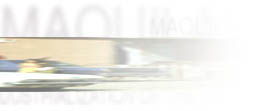

History
of the Maquiladora Program
The origin of what would become the Border Industrialization Program occurred
during World War II. The United States and Mexican governments implemented
the Bracero Program in August of 1942 to bring more manual labor to farms.
Thousands of migrant workers crossed the border to the United States in order
to make more money during a time of uncertainty and poverty. Although many
could not read, write, or even speak English, they were forced to sign contracts
that they could not understand. Consequently, they did not question their
rights and abuses of them were common. When the contracts were up, they were
required to return to Mexico. This was especially true over the next few decades
when the United States government would call for more workers during times
of economic turmoil and effectively give the migrants "the boot" in times
of economic boom. The program was not supposed to continue; however it led
to the Border Industrialization Program instead of dissolving after the end
of the war. The B.I.P. was established in the early to mid 1960s to replace
the Bracero program. It established factories that would import parts from
other countries and assemble them using Mexican labor. The supplies could
be imported duty-free into Mexico and were only taxed on the value added.
All of the products made in the maquilas are exported, to the United States
and overseas. Mexican citizens do not benefit from the products made in Mexico-they
only help to produce them.
One thing that attracted companies to establish factories in Mexico was the fact that Mexican labor was cheaper than U.S. labor. This cheap labor gave Mexico a comparative advantage in manufacturing products. Maquiladora factories are mostly located in urban centers along the U.S.-Mexico border, from Matamoros (across from Brownsville) to Tijuana (across from San Diego) (Lindquist 2001). About 90% of maquilas are located along the border, with one third concentrated in Juarez (NMEDD).